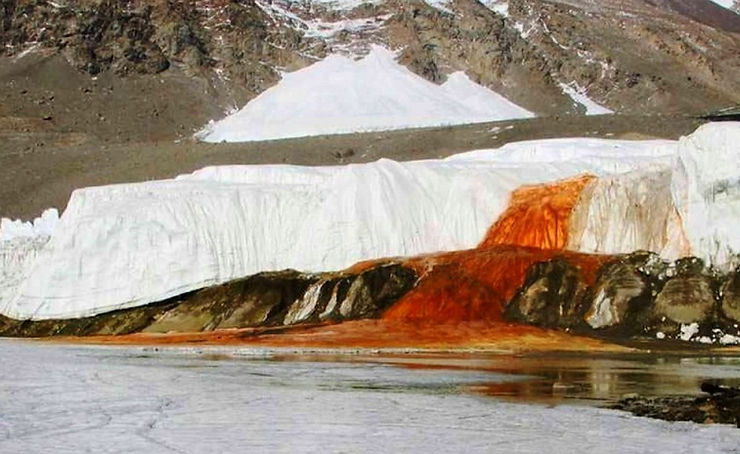By: Chloe Wu
Waterfalls serve as reminders of the Earth’s evolving beauty and power. Their cascading waters create an enchanting atmosphere that leave most people awestruck. One of the most iconic waterfalls around the world is Niagara Falls, which is located at the border between the United States and Canada. However, no waterfall is quite as unique as Antarctica’s “Blood Falls”.
This waterfall features a bright red stream starting at the tip of the Taylor Glacier. Scientists have been amazed by this natural phenomenon for over a century, but no one has been able to determine where it gets its red color. A possible theory was recently suggested by a team led by W. Berry Lyons of Ohio State University.
Blood Falls was first discovered by an Australian geologist, Griffith Taylor, when he was on an expedition in 1918. Since then, scientists have come up with many theories to try to explain this mystery. At first, people thought the red color stemmed from red algae, but that was eventually proven incorrect. Later scientists suggested that the color might have been from the iron in the lake that flowed into the waterfall.
Berry Lyons’ team analyzed the water and found enormous amounts of iron. Their data shows that the iron was created by micro bacteria from subglacial lakes. Subglacial lakes are the lakes found beneath glaciers. The iron oxidizes, giving the lake its red color.
As other researchers listened to their theory, they were surprised to find out that such environmental conditions could support micro bacterial colonies. The subglacial lake had conditions similar to those on Mars, which the researchers believe may suggest there is life on Mars and other planets.
Red or not, waterfalls are some of the most grandeur, natural phenomena. Whether they are thundering down or calmly flowing over rocks, waterfalls remind us of the majesty that we are surrounded by in nature.











